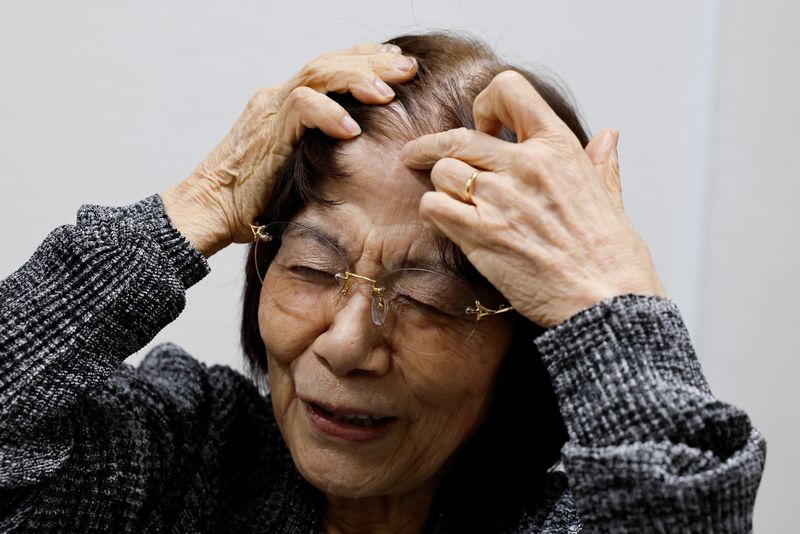By Daniel Leussink and Irene Wang
HIROSHIMA, Japan (Reuters) – Virtually eight a long time after an atomic bomb devastated her house city of Hiroshima, Teruko Yahata carries the scar on her brow from when she was knocked over by the drive of the blast.
The U.S. bombs that laid waste to Hiroshima on the morning of Aug. 6, 1945, and to Nagasaki three days later, modified the course of historical past and left Yahata and different survivors with deep scars and a way of accountability towards disarmament.
The awarding of the Nobel Peace Prize on Friday to the Nihon Hidankyo group of atomic bomb survivors, for its work warning of the risks of nuclear arms, has given survivors hope and highlighted their work nonetheless forward, Yahata and others mentioned.
“It felt as if a light suddenly shone through. I felt like I could see the light,” the 87-year-old mentioned on Saturday, describing her response to listening to in regards to the award.
“This feels like the first step, the beginning of a movement toward nuclear abolition,” she informed Reuters on the website of the Hiroshima Peace Memorial Museum.
She was simply 8 years outdated and within the again backyard of her house when the bomb hit. Though her home was 2.5 km (1.5 miles) from the hypocentre, the blast was sturdy sufficient to throw her a number of metres again into her home, she mentioned.
Seventy-nine years later, and a day after the Norwegian Nobel Committee awarded the survivors the prize, a protracted line shaped exterior the museum, with dozens of international and Japanese guests queuing as much as get in.
A bridge main into the memorial park was embellished with a yellow sheet and different handmade indicators towards nuclear weapons. Campaigners gathered signatures for nuclear abolition from these passing by.
Nihon Hidankyo, shaped in 1956, has offered hundreds of witness accounts, issued resolutions and public appeals, despatched delegations to the U.N. and peace conferences, and picked up signatures advocating nuclear disarmament.
Yahata, who will not be a Nihon Hidankyo member, mentioned it was that drive to assemble signatures that lastly paid off after bearing little fruit for many of a century.
“It’s this amount of sadness and joy that led them to this peace prize. I think it’s something very meaningful,” she mentioned.
Nihon Hidankyo’s co-chair, Toshiyuki Mimaki, mentioned he felt the award meant extra accountability, including that almost all atomic bomb survivors had been greater than 85 years outdated.

“Rather than feeling purely happy, I feel like I have more responsibility now,” he informed Reuters, sitting in a Hidankyo workplace in Hiroshima in entrance of a map exhibiting the influence of the bomb on town.
In rural areas the group is on the verge of falling aside, the 82-year-old mentioned. “The big challenge now is what to do going forward.”




